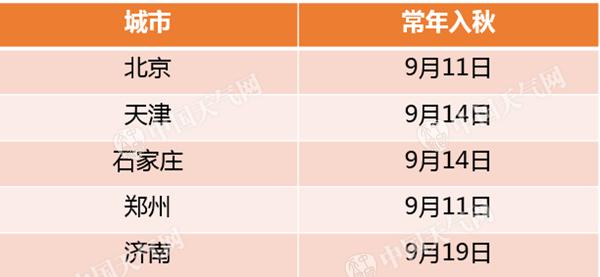
Traffic information is broadcast every day, and at twelve o’clock in traffic, you can sort out the traffic and car information you need every day to protect your safe travel. Today’s main information is that Hebei high-speed traffic police issued a reminder that the high-speed traffic during the Dragon Boat Festival holiday is not free, so that you can feel at ease and let your true feelings accompany you all the way. Shijiazhuang Station provides a good waiting environment for passengers during the Dragon Boat Festival holiday, and the three leading and luxurious six seats empower the 2022 Tang EV to start at 279,800 yuan to meet the needs of users. The Song PLUS DM-i 5G version came into being, with free purchase tax and more than 10,000 coupons.
First, traffic hotspots
Hebei high-speed traffic police issued a Dragon Boat Festival travel reminder that high-speed traffic during the Dragon Boat Festival holiday is not free.
From June 3rd to June 5th, the three-day Dragon Boat Festival holiday arrived as scheduled. The command center of Hebei High-speed Traffic Police Corps reminded that this year’s Dragon Boat Festival holiday will not implement the free traffic policy. During the holiday, the expressway traffic in our province will show the characteristics of "the inner ring drops, the outer ring rises, and the urban area is congested for a short time", that is, the traffic around Beijing drops, the traffic around the province rises, and the urban area is congested for a short time.
Flow characteristics
This year’s Dragon Boat Festival holiday has the following characteristics: First, the traffic volume has dropped significantly compared with last year. Affected by the epidemic, the daily traffic before the holiday has been kept at a low level, and the active traffic during the holiday has decreased significantly compared with previous years; Second, the traffic around Beijing decreased compared with that before the holiday, and the traffic around the province increased slightly. Affected by the epidemic in Beijing, the number of vehicles entering and leaving Beijing is low. The epidemic prevention and control in Shandong, Henan, Shanxi and Inner Mongolia around the province is relatively stable, and the demand for vehicles entering and leaving the province around the province is high; The third is short-distance travel. Affected by the epidemic prevention and control and security inspection policies, people travel mainly on short trips; Fourth, the slow charging and epidemic prevention inspection cross-exist. During the Dragon Boat Festival holiday, the short-term traffic peak at some points and the epidemic prevention inspection at high-speed ports are slowly superimposed, and the traffic pressure is relatively prominent.
flow analysis
It is estimated that this year’s Dragon Boat Festival holiday traffic will decrease obviously compared with previous years, and slightly compared with daily life. Travel traffic is still dominated by short-distance and Zhou Bianyou, and vehicles may queue up at intersections under expressways due to epidemic prevention and security inspection.
Flow around Beijing
It is estimated that the average daily traffic around Beijing during the Dragon Boat Festival holiday in 2022 will reach about 100,000 vehicles, which is 12% lower than the daily traffic.
Circumferential flow
It is estimated that the average daily traffic around the province during the Dragon Boat Festival holiday in 2022 will reach about 550,000 vehicles, which is 17% higher than the daily traffic.
Pre-judgment of rush hour and road section
Pre-judgment during peak hours
It is expected that there will be no large-scale peak of going out of the city and returning for three days during the Dragon Boat Festival holiday, and the traffic flow will be relatively even. There may be a short-term slowdown from 9: 00 am to 11: 00 am and from 16: 00 pm to 19: 00 pm, but the duration will not be long.
Pre-judgment of slow road section
It is estimated that the congestion points are still concentrated in the vicinity of epidemic prevention checkpoints in various cities, highways around the city and construction sections, and there may be a short-term slowdown in Jingha Qinhuangdao East, Xuanda Xuanhua South, Shijiazhuang East, Jingkun Xingtang South, Jingkun Xibaipo Section, Qingyin Xiulin Section and Jingha Tangshan Section.
Countermeasures of high-speed traffic police
In order to ensure the safety of people’s travel during the Dragon Boat Festival holiday, prevent the risk of congestion and effectively prevent traffic accidents, Hebei high-speed traffic police, according to the characteristics of the possible increase of traffic around the province during the Dragon Boat Festival this year, will preset police forces to be on key duty in advance near the provincial boundary and at the main entrances and exits of trucks under its jurisdiction, and rely on the integrated working mechanism of road police to coordinate road administration, obstacle removal, traffic owners and other departments to carry out joint prevention and control, find out the growth trend of road traffic in advance, and take traffic control measures in advance to resolve the risk of road congestion by not blocking first. At the same time, the traffic guidance information will be released by using 5G messages, radio, Internet navigation, WeChat, Weibo WeChat official account, and pavement LED screens, and timely guidance will be given to the congested slow-moving sections, interchanges, service areas and entrance stops in the jurisdiction, reminding drivers to plan routes reasonably, avoid congested sections, and travel at the wrong peak and stop at the wrong time, so as to improve traffic safety awareness and avoid traffic accidents.
Hebei high-speed traffic police tip: small partners with travel plans should pay attention to the epidemic prevention and control requirements of the starting point and destination, report in advance and do personal protection. When passing through the expressway, you should plan the route in advance to avoid passing and missing; Control the speed and distance while driving, and drive carefully; Slow-moving sections should try to avoid interspersed and orderly passage; In the event of a traffic accident, remember the nine-character warning tactic of "pull over, evacuate and call the police" to avoid secondary injuries.
Related links: weather analysis
The Provincial Meteorological Center predicts that the weather during the Dragon Boat Festival holiday will be mainly sunny and cloudy, as follows:
On the 3rd, it was cloudy in the central and northern regions, and cloudy in other areas.
On the 4th, it was cloudy in the north and cloudy in other areas.
On the 5th, it was cloudy in the north and cloudy in other areas.
Second, Hebei Expressway Express
Road conditions of Hebei Expressway on June 2] It’s sunny today. Shijiazhuang, Langfang, Tangshan, Handan, Cangzhou, Qinhuangdao, Baoding and Dingzhou: 1 and 6. Beijing: 1 and 6. (The measures to limit the number of counties and cities under the jurisdiction of restricted cities shall be subject to the release of the local traffic control department. )
Qinglan Expressway (G22):
Hanchang section of Qinglan Expressway: Due to reconstruction and expansion, Shexian West Railway Station is closed in the direction of Shanxi and Shexian West Railway Station is closed in the direction of Handan.
Third, the civil aviation airport, railway travel
Civil aviation airport: peace of mind and comfort, let the true feelings accompany you all the way.

Children’s Day on June 1st and Dragon Boat Festival holiday came one after another. Shijiazhuang Airport upgraded and improved the children’s play area, maternal and child room, and launched a number of children’s service measures. No matter whether children are accompanied by their parents or traveling alone, they can enjoy the exclusive service of peace of mind and comfort, so that the true feelings can accompany the children all the way.
Railway travel: Shijiazhuang station provides a good waiting environment for passengers to travel during the Dragon Boat Festival holiday.
On the occasion of the Dragon Boat Festival holiday, Shijiazhuang Station earnestly implemented the requirements for epidemic prevention and control, strictly carried out the disinfection work, and created a safe and secure ride environment for passengers.
Full coverage and deep cleaning. For the stains on the platform surface, the operation processes of "sweeping", "sprinkling", "brushing", "sucking" and "flushing" are adopted, and the platform surface is fully covered and cleaned with different equipment and tools such as single brush machine, water suction machine and washing machine, and at the same time, the stairs, elevators, corridors, waiting rooms in the station area, toilets, corridors, escalators, glass rooms and drop-off platforms are cleaned.

Strictly do a good job of comprehensive killing. The station strengthens communication and coordination with the local government, strictly implements effective measures such as ventilation and disinfection on the basis of grasping the interior, and carries out preventive disinfection at least once every two hours, and wipes and disinfects the equipment frequently contacted by passengers such as gates, self-service ticket machines, elevator buttons, escalator handrails and service tables twice every hour to ensure that the environment of the station area is kept clean and provide a healthy and safe waiting environment for passengers.
Fourth, industry focus
Three leading+luxury six-seat empowerment 2022 Tang EV starts at 279,800 yuan.

On June 1st, BYD’s 2022 Tang EV was officially listed, and the price was 279,800-339,800 yuan after comprehensive subsidies. At the same time, it launched four car rights and interests of "2 worry-free car purchase policies, 1 worry-free car guarantee, 5 exclusive VIP services and 5 online services of Zhilian", which can be described as full of sincerity. As the leader of pure electric SUV, the flagship strength of 2022 Tang EV has evolved in all dimensions, and with the three leading factors of "battery life, safety and technology" and the brand-new luxury quality such as six seats, it has set a new benchmark for the value of high-end pure electric SUV.
To meet the needs of users, Song PLUS DM-i 5G came into being.

Recently, the BYD Song PLUS DM-i 5G version has made a strong attack, which has received extensive attention and discussion. It is understood that it is based on the five models of Song PLUS DM-i, distinguished model, flagship model, flagship PLUS and four-wheel drive flagship plus, and two models of flagship PLUS 5G and four-wheel drive flagship PLUS 5G are added. The price is 185,800 yuan and 216,800 yuan.
The purchase tax is free, the welfare is increased by 10,000 coupons, and the 2022 Geely Car Festival is officially launched.
On June 1st, Geely’s June Car Festival was fully launched, and the super activities arrived as scheduled. It is understood that during the event, Geely enjoyed the policy of halving the purchase tax, and some models were free of purchase tax, which brought the gospel of car purchase to the majority of interested users.
Five, enjoy the book-today’s good book recommendation: "Dunhuang Painting School" by Qin Chuan and An Qiu

Content introduction:This book interprets the historical origin, inheritance and development of Dunhuang art. Through the combination of on-the-spot interview and historical data sorting, this paper tells the stories of legends in China art history in the 20th century. The depth of history and scholarship is explained with popular and interesting stories, showing their mental journey of returning to the national art tradition, sticking to the desert and promoting culture and their spiritual track passed down from generation to generation. The book is full of passion, sincere writing, from emotion to reason and thought-provoking. It is a masterpiece with ideological and artistic beauty.










































